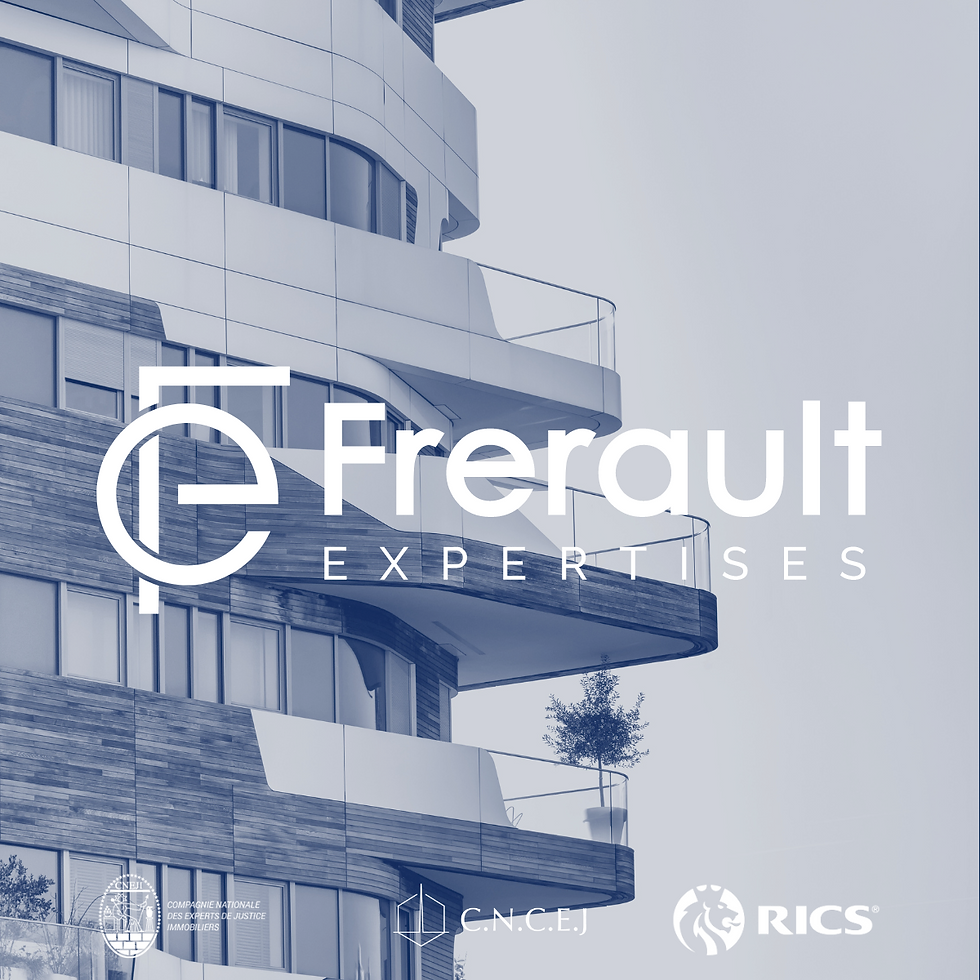The Impact of Infrastructure Projects on Real Estate Valuation
- Alex
- Jun 20, 2024
- 4 min read
The Impact of Infrastructure Projects on Real Estate Valuation
Major infrastructure projects, such as new metro lines, highways, and airports, are powerful drivers of urban transformation and economic development. For real estate valuation experts, understanding the complex dynamics induced by these projects is imperative for providing well-founded and comprehensive analyses.
Improved Accessibility and Connectivity
Public Transport:
Enhancing public transport infrastructure, particularly through the expansion of metro networks, is a central lever for optimizing urban accessibility. For example, the extension of Paris Metro Line 14 has reduced travel times to the city center, resulting in significant appreciation of property values in neighborhoods like Saint-Ouen and Clichy. A study by the Paris Chamber of Notaries shows a 20% increase in real estate prices in these areas, demonstrating the direct impact of improved connectivity on property valuation.
Road Networks:
The construction of highways and major roads enhances interurban mobility, attracting strategic investments. The completion of the A89 highway between Lyon and Bordeaux has substantially improved connectivity between these cities, boosting real estate demand along this key corridor. An INSEE study reveals that municipalities near the new highway saw a 15% increase in real estate transactions within two years of its opening.
Economic and Urban Development
Commercial and Residential Zones:
Transport infrastructure acts as a catalyst for local economic development, attracting businesses and fostering the construction of housing. The opening of Lyon-Saint Exupéry Airport, with its connection to the TGV network, transformed the surrounding areas, triggering a massive influx of commercial and residential projects. The development of the Part-Dieu district is a prime example.
Multiplier Effect:
Major infrastructure projects often lead to complementary investments in local infrastructure (secondary roads, schools, parks). This multiplier effect creates a dynamic and attractive urban ecosystem, thereby increasing property values. The Euroméditerranée project in Marseille perfectly illustrates this, having revitalized the city center and attracted over €7 billion in private investments.
Urban Requalification and Densification
Urban Requalification:
The transformation of Île de Nantes exemplifies the impact of infrastructure projects on economic and real estate development. This industrial site was converted into a vibrant district through strategic investments, particularly in urban and transport infrastructure. Rehabilitation projects transformed former shipyards into mixed-use spaces integrating housing, offices, shops, and cultural facilities. The Prairie-au-Duc neighborhood, with projects like Îlink, combines 14,000 m² of housing, 6,000 m² of tertiary activities, and 2,000 m² of local shops, symbolizing this renaissance.
Densification:
The transformation of Lyon's Confluence district is a significant example of the impact of infrastructure projects on urban densification. Located at the confluence of the Rhône and Saône rivers, this formerly industrial area was revitalized through strategic investments, including new tram lines and improved connections to the existing public transport network. The construction of the T1 tram line, for instance, not only enhanced mobility but also encouraged urban densification by increasing demand for housing and commercial spaces near tram stops. This densification is essential for creating sustainable and economically viable cities.
Comparative Market Analysis
Using recent sales data from similar areas affected by infrastructure projects allows for projections of potential value increases. This comparative method, based on concrete and recent examples, provides a solid basis for accurate valuations. A study by the Île-de-France Urban Planning Institute on the impact of the Grand Paris Express highlights that properties near future metro stations see price increases of 5% to 10% even before the completion of the works.
Case Studies and Economic Research
Applied Research:
Integrating case studies of similar projects in other regions helps understand anticipated impacts. Research on the extension of the B metro line in Toulouse, for instance, offers valuable insights for similar projects in France, facilitating more accurate projections. Property values around new stations increased by an average of 15%, according to a Toulouse Métropole study.
Practical Examples:
Renovation of Gare Saint-Jean in Bordeaux: The renovation of Gare Saint-Jean and the improvement of rail infrastructure revitalized the neighborhood, increasing property values. Valuers must consider these transformations by incorporating similar case studies and detailed economic projections. According to a study by Bordeaux Métropole and our internal database, property values in the Saint-Jean neighborhood increased by nearly 40% since the start of the works.
Extension of Lyon's Tramway Line B: The extension of tramway line B boosted residential property prices in the Gerland and Oullins neighborhoods. A study by the Lyon Urban Development Agency (URBALYON) demonstrated that this increase is primarily due to improved connectivity and accessibility.
Conclusion
Infrastructure projects, whether new public transport lines, highways, or airports, are not merely functional improvements. They are catalysts for urban and economic transformation,
and their impact must be carefully evaluated and integrated by experts to ensure informed and strategic investment decisions.
Real estate valuation experts must combine a deep understanding of current dynamics with a strategic vision of future developments. Their role is to provide robust and relevant analyses, considering the complex transformations induced by infrastructure projects. This approach helps maximize the value of real estate investments and contributes to the sustainable and balanced development of urban areas.
Infrastructure projects play a decisive role in real estate valuation, reshaping urban landscapes and stimulating local economies. While real estate valuers are tasked with estimating market value at a given time, they must also consider the impacts of both present and future infrastructures without attempting to predict the future. Their role, integrity, and transparency thus become crucial.



Comments